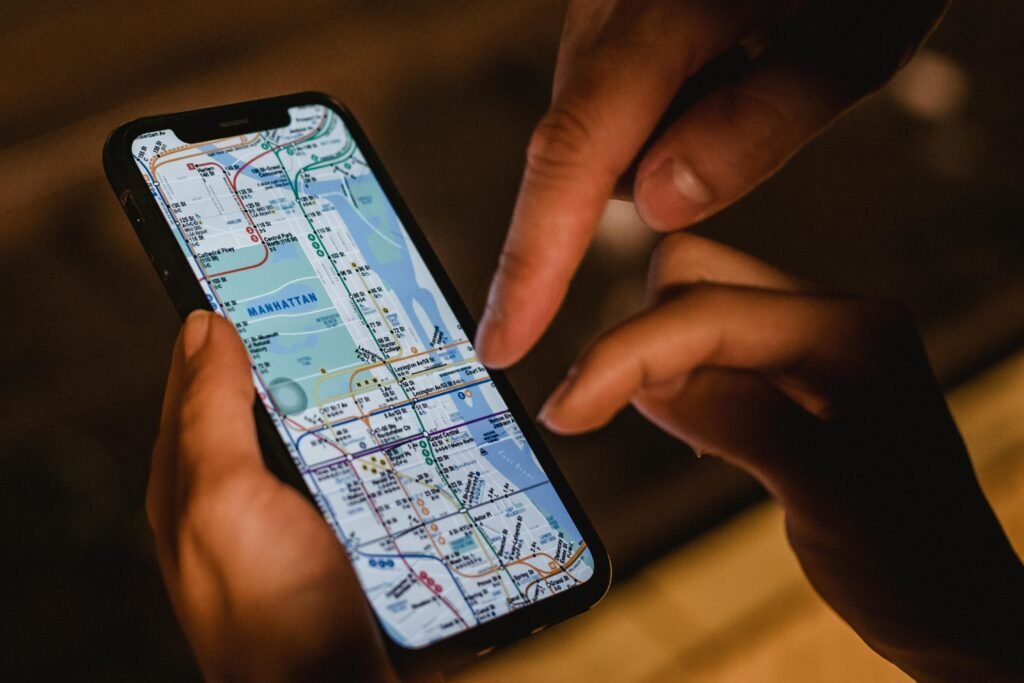Location-aware applications do not use only GPS (Global Positioning System) to determine a user's location, but Wi-Fi positioning, cellular network data, and Bluetooth beacons are also used for this purpose.
Technologies for Outdoor Tours
GPS Technology
Reliability and Accuracy: GPS is the primary technology for outdoor navigation, offering reliable location data with an accuracy of less than 10 meters in open environments. This makes it ideal for outdoor tours, where precise location tracking is essential for delivering context-aware content. All of our tours currently available on the VoiceMap platform, utilize GPS technology for guiding users whether they are walking or driving outdoors.
Integration with Mobile Devices: GPS is widely accessible on smartphones, allowing seamless integration with mobile apps that deliver audio content based on the user’s location.
Examples: Companies like Uber and Lyft utilize GPS to track the locations of drivers and passengers, ensuring efficient ride-sharing services. Similarly, delivery services like FedEx use GPS to optimize routes and track parcels in real-time.
Considerations for Outdoor Tours
Environmental Factors: Outdoor tours must account for factors such as weather conditions, which can affect the user’s experience. Audio content should be designed to remain clear and audible in various environmental conditions.
Battery Consumption: Continuous GPS usage can drain battery life, so optimizing power consumption is crucial. Developers should ensure that apps efficiently manage GPS usage to prolong device battery life.

Technologies for Indoor Tours
Indoor Positioning Systems (IPS)
Wi-Fi and Bluetooth Beacons: These technologies are commonly used for indoor positioning, where GPS signals are unreliable. Beacons provide accurate location data by broadcasting signals that devices can detect.
Ultra-Wideband (UWB) Technology: UWB offers highly accurate location data by measuring signal travel times between devices, making it suitable for detailed indoor navigation.
Examples: Mapsted uses advanced indoor navigation technology that does not rely on external hardware like Bluetooth beacons, providing seamless navigation in complex indoor environments such as university campuses and hospital complexes.
Considerations for Indoor Tours
Signal Challenges: Indoor environments often present challenges such as signal interference and variability. Technologies must be calibrated and maintained to ensure consistent performance.
User Experience: The interface should be intuitive, providing clear instructions and real-time updates. This is essential for guiding users through complex indoor spaces like museums or historical sites.

We Can Help with Indoor Navigation
Constructing an indoor or outdoor tour using location-aware technologies requires careful consideration of the environment and user experience. Click the button to get more information.

Seamless Navigation
Sensor Fusion: Combining data from multiple sources, such as GPS, Wi-Fi, and inertial sensors, can facilitate smooth transitions between indoor and outdoor environments. Intelligent sensor fusion algorithms ensure accurate positioning across different settings.
Map Updates and Maintenance: Regular updates to maps and positioning infrastructure are necessary to maintain accuracy and reliability. This includes updating beacon placements and recalibrating systems as needed.
Machine Learning and Artificial Intelligence Enhancements
Machine learning (ML) and artificial intelligence (AI) play a pivotal role in improving the performance of location-aware audio tours. These technologies enhance precision, personalization, and efficiency in several ways:
Data Accuracy and Contextualization: ML algorithms can process real-time data to improve the accuracy of location tracking, especially in environments where signals are variable. By learning from user movement patterns, ML can refine location data and provide more precise navigation.
Personalization: AI can analyze user preferences and behaviors to deliver personalized content. For instance, an audio tour can adapt its narrative based on the user’s interests or previous interactions, providing a more engaging experience.
Predictive Analytics: AI-powered predictive analytics can anticipate user needs and suggest relevant content or routes. This proactive approach enhances user satisfaction by delivering timely and context-aware information.
In summary, constructing an indoor or outdoor tour using location-aware technologies requires careful consideration of the environment and user experience. By integrating advanced technologies like GPS, beacons, and UWB, and leveraging ML and AI, companies and institutions can create dynamic and personalized audio tours that captivate and inform their audiences.



